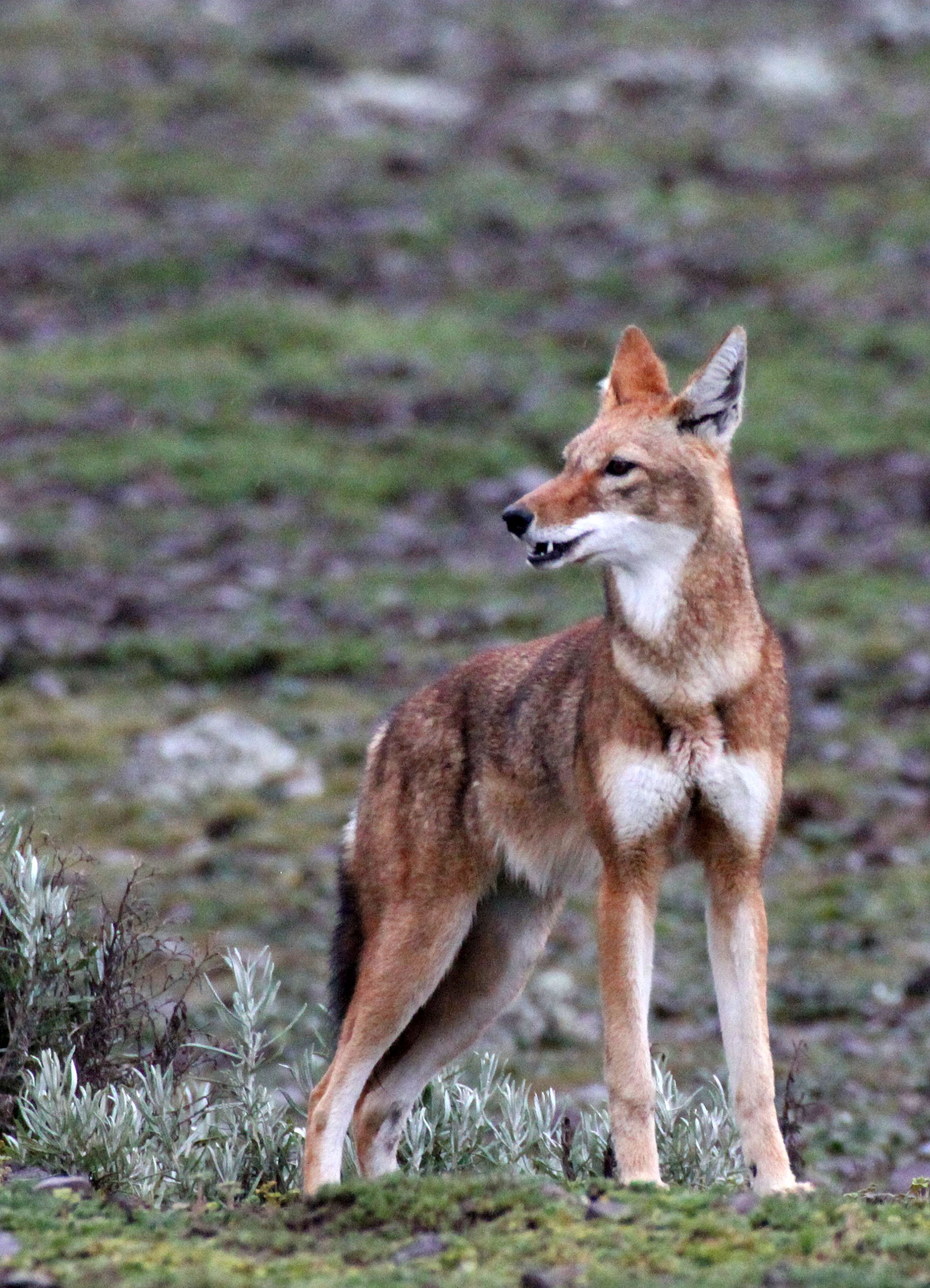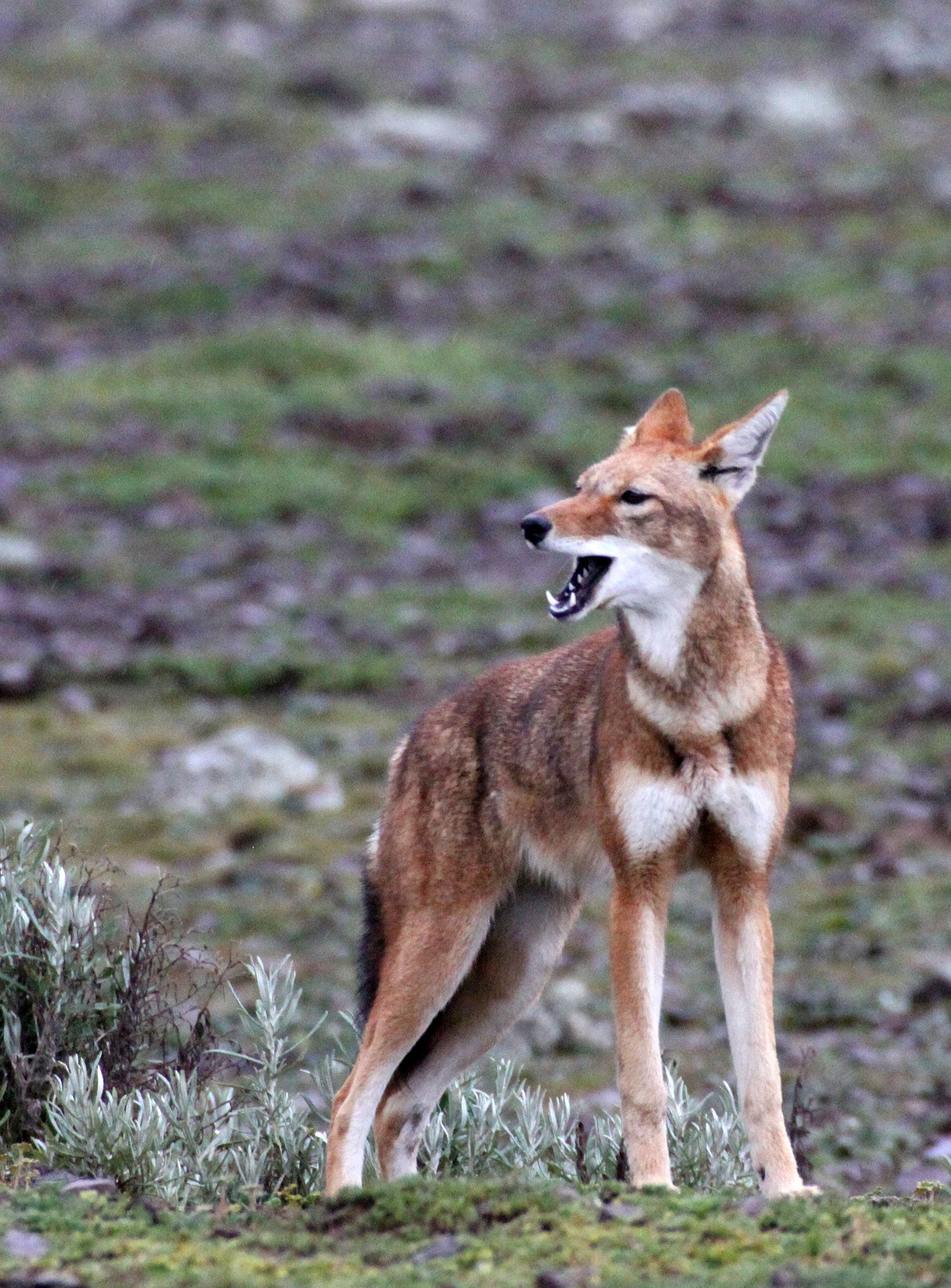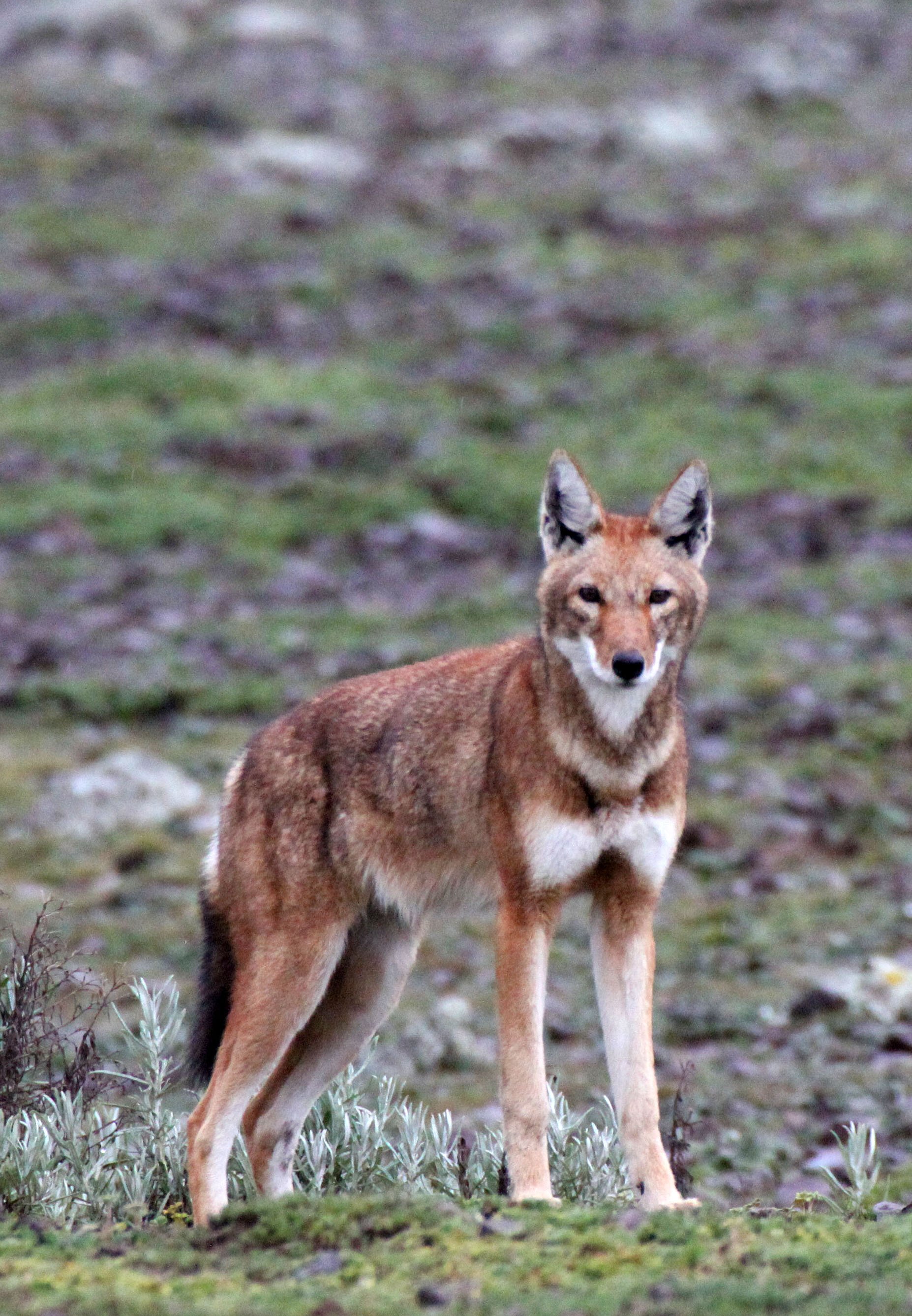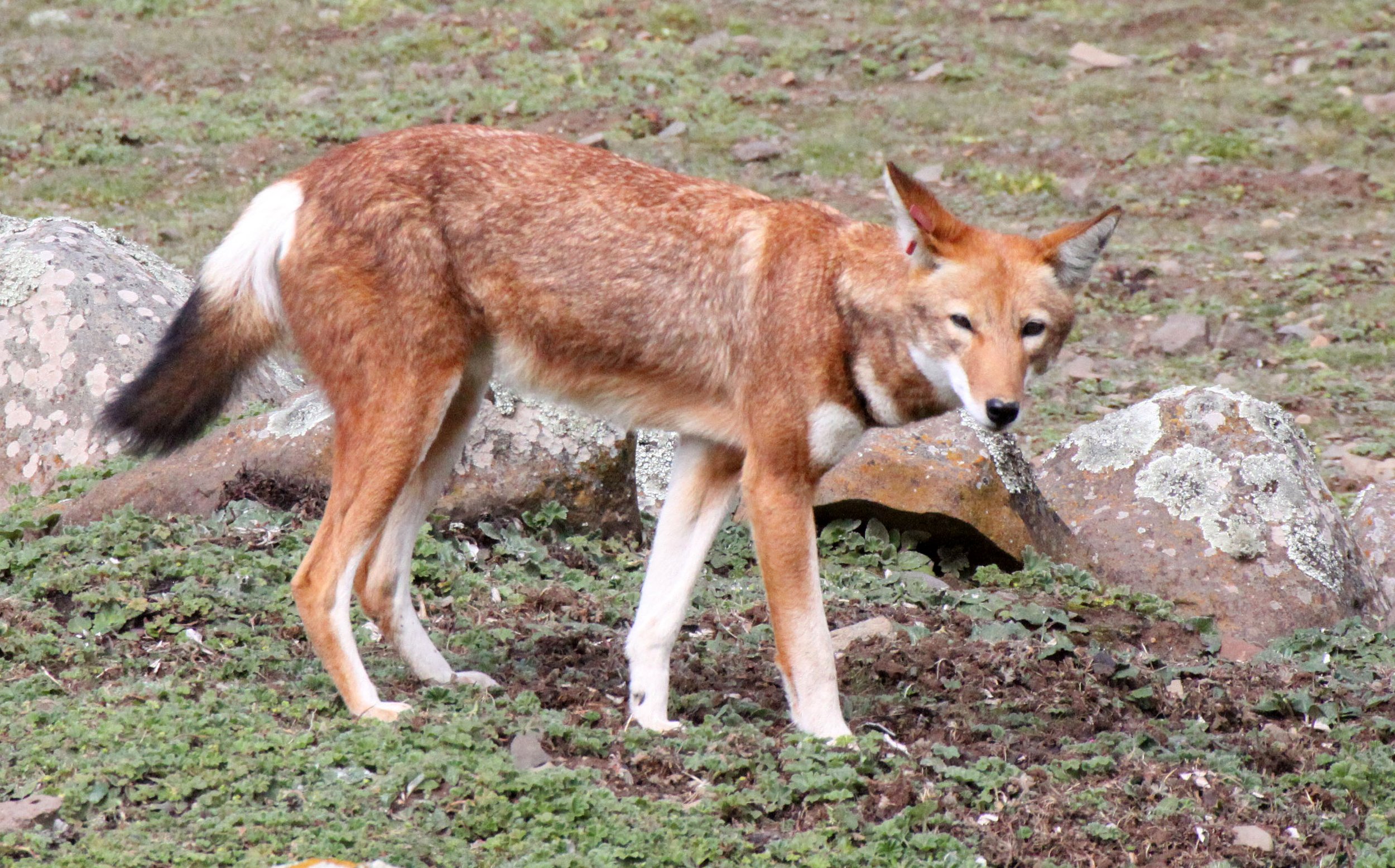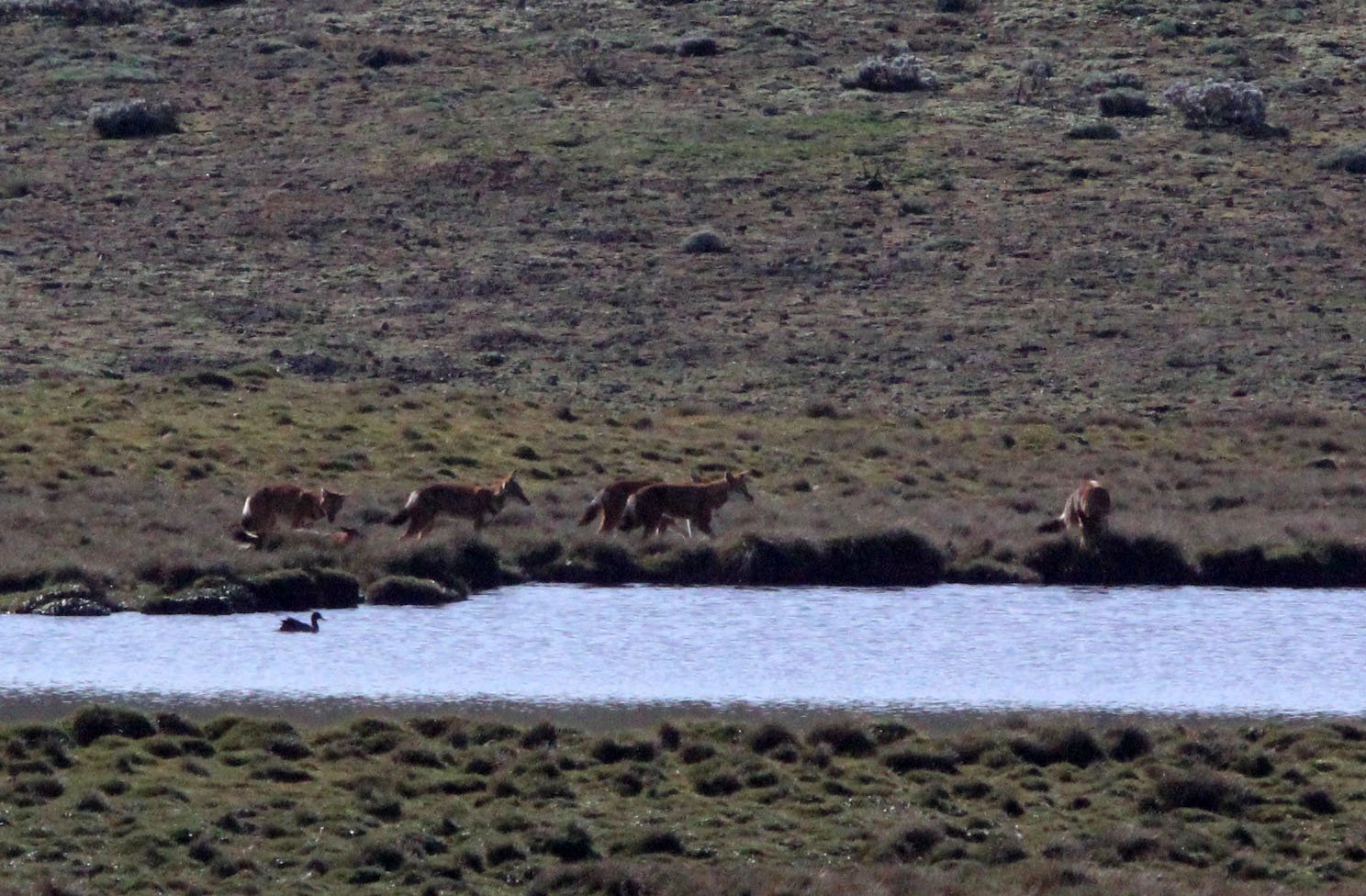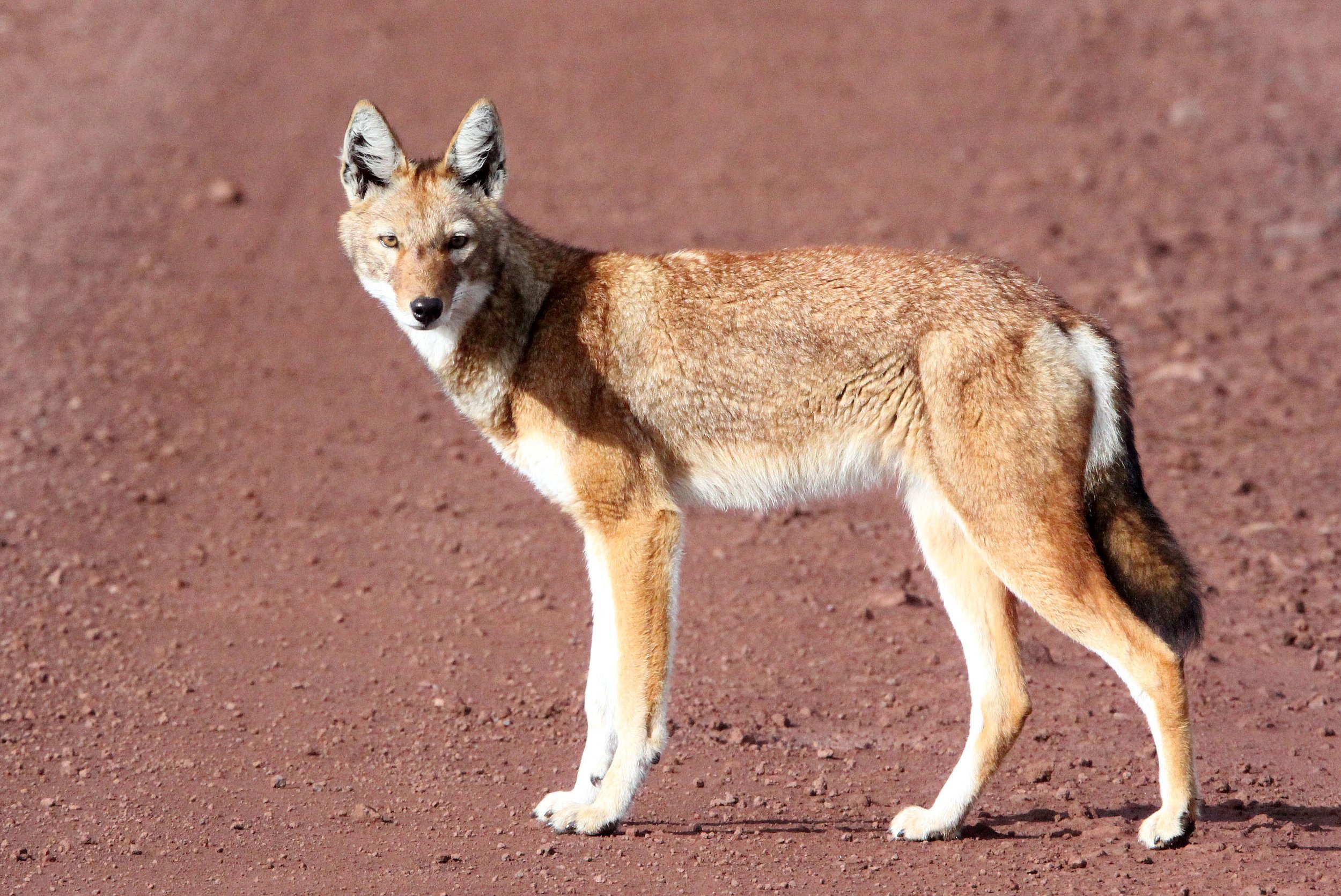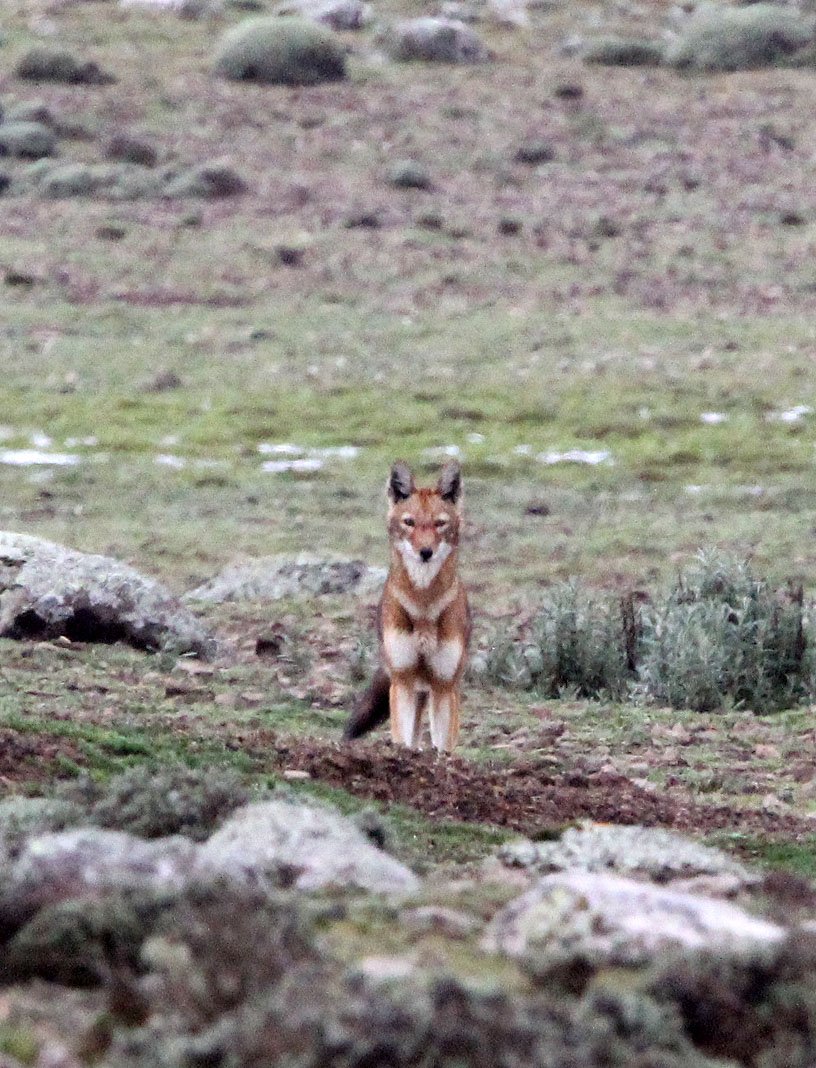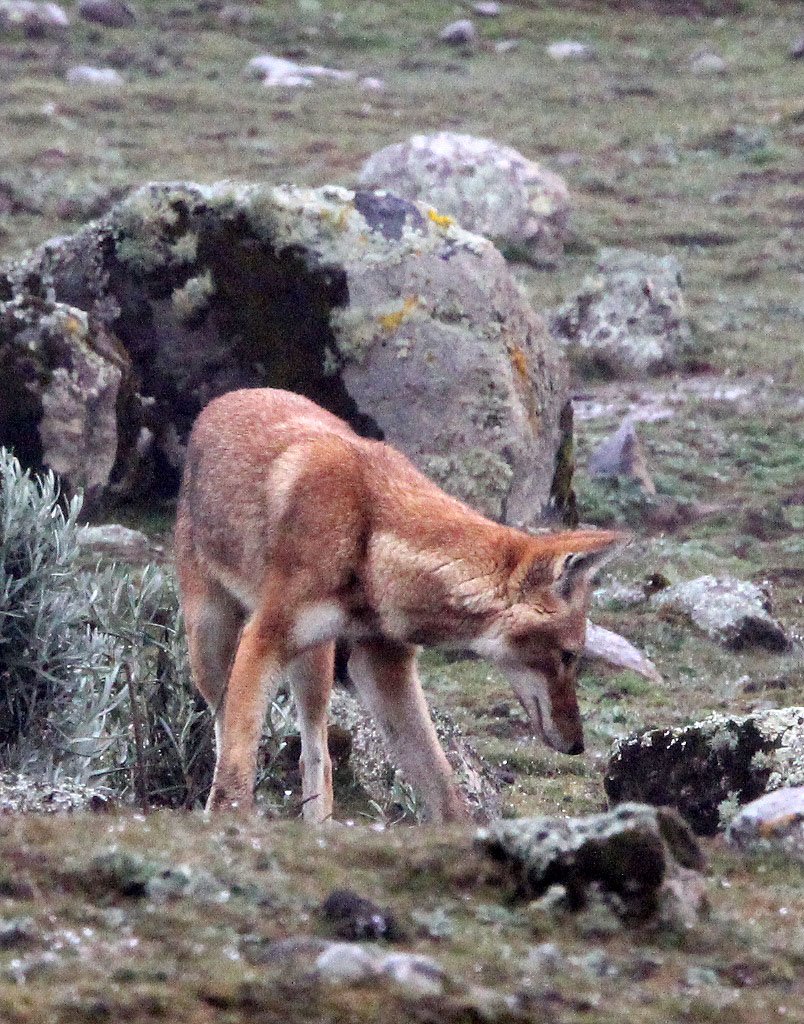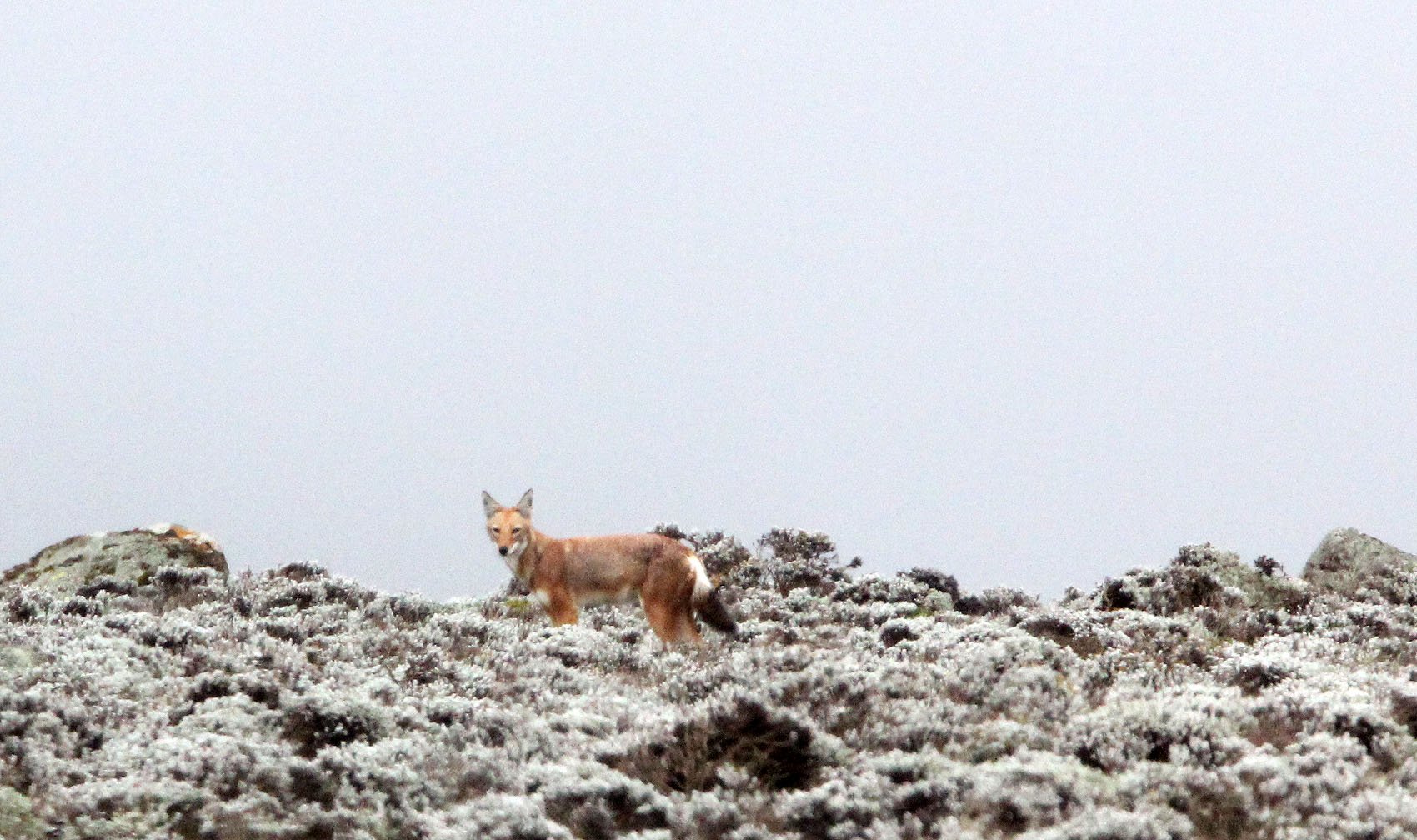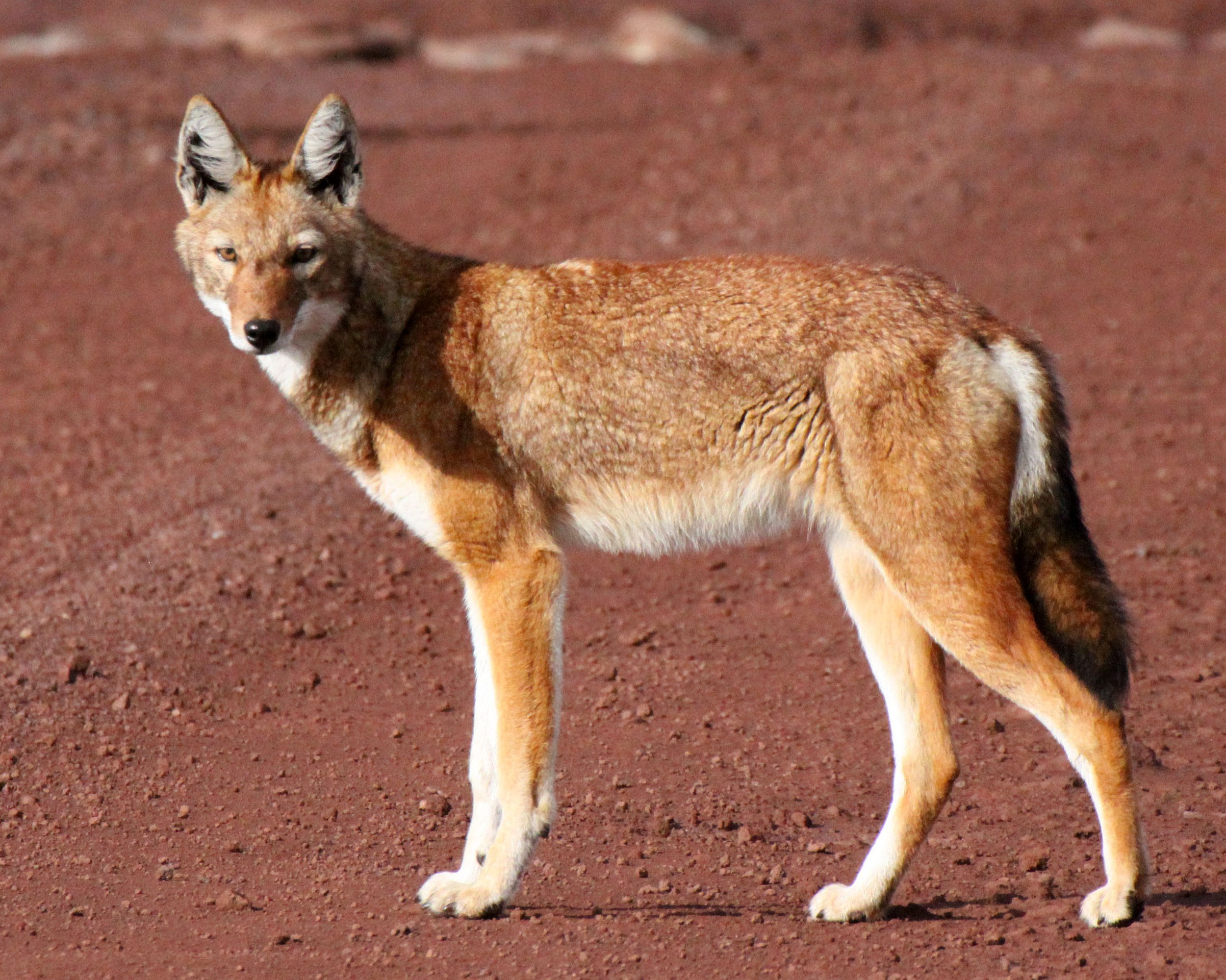
Canis simensis Ethiopian Wolf
The Ethiopian wolf (Canis simensis), also called the Simien jackal and Simien fox, is a canine native to the Ethiopian Highlands. In southeastern Ethiopia it is also known as the horse jackal. It is similar to the coyote in size and build, and is distinguished by its long and narrow skull, and its red and white fur. Unlike most large canids, which are widespread, generalist feeders, the Ethiopian wolf is a highly specialised feeder of Afroalpine rodents with very specific habitat requirements. It is one of the world's rarest canids, and Africa's most endangered carnivore. The specie's current range is limited to seven isolated mountain ranges at altitudes of 3,000–4,500 m, with the overall adult population estimated at 360–440 individuals in 2011, more than half of them in the Bale Mountains.
The Ethiopian wolf is listed as endangered by the IUCN, on account of its small numbers and fragmented range. Threats include increasing pressure from expanding human populations, resulting in habitat degradation through overgrazing, and disease transference and interbreeding from free-ranging dogs. Its conservation is headed by Oxford University's Ethiopian Wolf Conservation Programme, which seeks to protect wolves through vaccination and community outreach programs.
Although fossil records exist of wolf-like canids from Late Pleistocene Eurasia, no fossil records are known for the Ethiopian wolf. In 1994, a mitochondrial DNA analysis showed a closer relationship to the gray wolf and the coyote than to other African canids, and C. simensis may be an evolutionary relic of a gray wolf-like ancestor's past invasion of northern Africa from Eurasia.
Due to the high density of rodents in their new Afroalpine habitat, the ancestors of the Ethiopian wolf gradually developed into specialised rodent hunters. This specialisation is reflected in the animal's skull morphology, with its very elongated head, long jaw, and widely spaced teeth. During this period, the species likely attained its highest abundance, and had a relatively continuous distribution. This changed about 15,000 years ago with the onset of the current interglacial, which caused the species' Afroalpine habitat to fragment, thus isolating Ethiopian wolf populations from each other.
The Ethiopian wolf is one of five Canis species present in Africa, and is readily distinguishable from jackals by its larger size, relatively longer legs, distinct reddish coat, and white markings.
In 2015, a study of mitochondrial genome sequences and whole genome nuclear sequences of African and Eurasian canids indicated that extant wolf-like canids have colonised Africa from Eurasia at least five times throughout the Pliocene and Pleistocene, which is consistent with fossil evidence suggesting that much of African canid fauna diversity resulted from the immigration of Eurasian ancestors, likely coincident with Plio-Pleistocene climatic oscillations between arid and humid conditions. According to a phylogeny derived from nuclear sequences, the Eurasian golden jackal (Canis aureus) diverged from the wolf/coyote lineage 1.9 million years ago, and with mitochondrial genome sequences indicating the Ethiopian wolf diverged from this lineage slightly prior to that. Further studies on RAD sequences found instances of Ethiopian wolves hybridizing with African golden wolves.
This pack had at least ten individuals (six in image).
The Ethiopian wolf is a social animal, living in family groups containing up to 20 adults (individuals older than one year), though packs of six wolves are more common. Packs are formed by dispersing males and a few females, which with the exception of the breeding female, are reproductively suppressed. Each pack has a well-established hierarchy, with dominance and subordination displays being common. Upon dying, a breeding female can be replaced by a resident daughter, though this increases the risk of inbreeding. Such a risk is sometimes circumvented by multiple paternity and extra-pack matings. The dispersal of wolves from their packs is largely restricted by the scarcity of unoccupied habitat.
These packs live in communal territories, which encompass 6 km2 (2.3 sq mi) of land on average. In areas with little food, the species lives in pairs, sometimes accompanied by pups, and defends larger territories averaging 13.4 km2 (5.2 sq mi). In the absence of disease, Ethiopian wolf territories are largely stable, but packs can expand whenever the opportunity arises, such as when another pack disappears. The size of each territory correlates with the abundance of rodents, the number of wolves in a pack, and the survival of pups. Ethiopian wolves rest together in the open at night, and congregate for greetings and border patrols at dawn, noon, and evening. They may shelter from rain under overhanging rocks and behind boulders. The species never sleeps in dens, and only uses them for nursing pups. When patrolling their territories, Ethiopian wolves regularly scent-mark, and interact aggressively and vocally with other packs. Such confrontations typically end with the retreat of the smaller group.
Simien Mountains Ethiopian Wolf (Canis simensis simensis) - Chenek Camp in the Simien Mountains. This is the rarest subspecies.






Southern Ethiopian Wolf (Canis simensis citernii) - Bale Mountains Population. Total sightings for one day was 19 individual wolves.








































































































































































